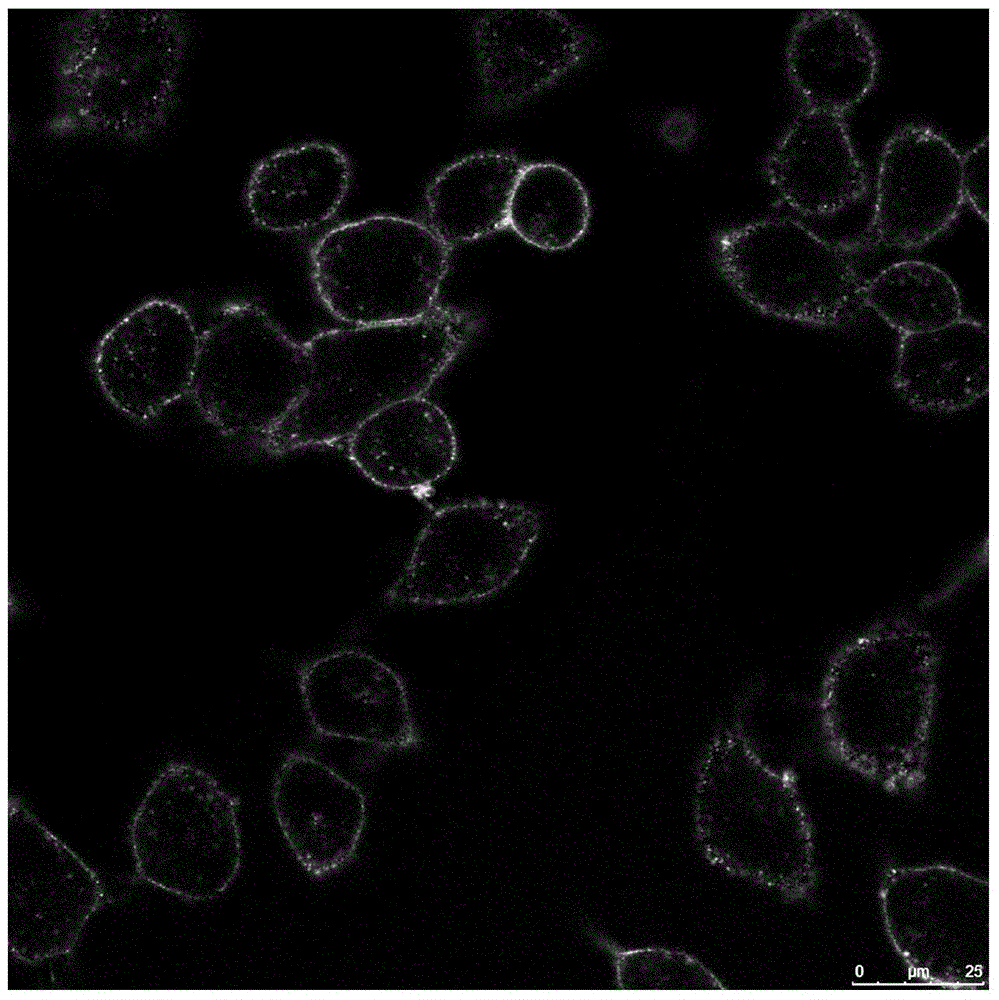Fluorescent nano-particle based cell membrane imaging reagent and preparation method thereof
A fluorescent nanoparticle and fluorescence imaging technology, applied in the biological field, can solve the problems of fluorescent nanoparticle cell endocytosis, loss of cell membrane labeling specificity, etc., achieving good biocompatibility, excellent imaging effect, and saving staining time.
- Summary
- Abstract
- Description
- Claims
- Application Information
AI Technical Summary
Problems solved by technology
Method used
Image
Examples
Embodiment 1
[0024] Cell membrane fluorescence imaging reagent based on fluorescent nanoparticles, composed of component A and component B. Component A: chitosan-10% cholesterol-10% biotin, component B: avidin-QDs (CdSeZnS).
[0025] Specifically, for the molecular structure of the fluorescent nanoparticle-based cell membrane fluorescence imaging reagent, see figure 1 , consisting of component A and component B. Among them, component A is based on glycol chitosan macromolecule (glycochitosan) as the backbone, and the side chain contains 10% polyethylene glycol 2000-cholesterol (PEG2000-cholesterol) hydrophobic units and 10% biotin molecules (biotin ); Ethylene glycol chitosan polymer has good biocompatibility and water solubility, the degree of polymerization is about 400, and the molecular weight is above 10,000. Experiments have proved that chitosan with a molecular weight of 10,000-100,000 can be well realized The present invention: the cholesterol hydrophobic anchoring unit is connec...
Embodiment 2
[0032] Cell membrane fluorescence imaging reagent based on fluorescent nanoparticles, composed of component A and component B. Component A: chitosan-10% cholesterol-10% biotin, component B1: avidin-biotin-CuS-FITC.
[0033] Specifically, for the molecular structure of the fluorescent nanoparticle-based cell membrane fluorescence imaging reagent, see figure 2 , consisting of component A and component B. Among them, component A is based on glycol chitosan macromolecule (glycochitosan) as the backbone, and the side chain contains 10% polyethylene glycol 2000-cholesterol (PEG2000-cholesterol) hydrophobic units and 10% biotin molecules (biotin ); ethylene glycol chitosan macromolecule has good biocompatibility and water solubility, the degree of polymerization is about 400, and the molecular weight is above 10,000; the hydrophobic side chain of cholesterol is connected to chitosan through PEG2000 with a molecular weight above 500 Amino groups, namely NHS-PEG2000-cholesterol, inc...
Embodiment 3
[0036] The implementation method of this embodiment is similar to the method in Example 2, except that component B is a silica nanoparticle doped with a rhodamine dye of grafted avidin, and the imaging effect is as follows Image 6 shown.
PUM
| Property | Measurement | Unit |
|---|---|---|
| degree of polymerization | aaaaa | aaaaa |
Abstract
Description
Claims
Application Information
 Login to View More
Login to View More - R&D
- Intellectual Property
- Life Sciences
- Materials
- Tech Scout
- Unparalleled Data Quality
- Higher Quality Content
- 60% Fewer Hallucinations
Browse by: Latest US Patents, China's latest patents, Technical Efficacy Thesaurus, Application Domain, Technology Topic, Popular Technical Reports.
© 2025 PatSnap. All rights reserved.Legal|Privacy policy|Modern Slavery Act Transparency Statement|Sitemap|About US| Contact US: help@patsnap.com



